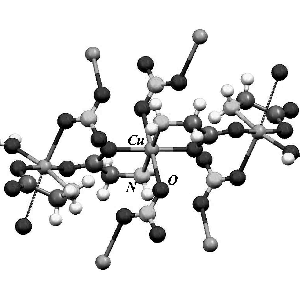
English > News
Young scientists of Samara University began to make the most complete database of coordination polymer
25.03.2016, 16:20
A group of young scientists of Samara University under the guidance of the candidate of chemical sciences Yevgeniy Aleksandrov began to make the most extensive database in the world for the structure and physical properties of crystalline coordination polymers.
The studies are conducted in the Interuniversity Research and Development Centre for Theoretical Materials Science (IRDCTMS) of SSAU.
The scientists search for fundamental regularities in the formation of these compounds, reveal the principles of their design, calculate and predict new properties of these substances.
“The idea of making a database for coordination polymers already exists in the scientific community of the world. There are already certain analogues of such databases, but they are very limited, because they were made to decide specific tasks. Whereas we consider the aspects of their application as much as possible and we have the opportunity to create the most complete and interesting database that will continue to develop”, - assured Yevgeniy Aleksandrov.
Up to date, a lot of publications on coordination polymers have been made in the scientific community. Over 20 thousand articles have been published during the last fifteen years from the moment of synthesis of the first porous metalorganic coordination polymers. Moreover, Cambridge Structural Database contains information about more than 66 thousand of these compounds. The material is wide-ranging, but most scientists basically examine particular regularities and thereat they often do not have the possibility to conduct analyses of a large sample of structures and, as a result, to make significant scientific findings. It is also important to expanse the objects range and types of information: to add new properties and new materials, both calculated and already measured. In the future, it will be possible to perform synthesis of the predicted compounds and their properties in collaboration with the experimental laboratories.
"Yevgeniy Aleksandrov is a brilliant scientist, able to perform detailed analysis of thousands of structures. In particular, with his help, we have created an analysis method for the composite coordination polymers which structures contain interweaving. We can classify any type of interweaving using this method. Moreover, we can find the known reasons and it is important for the chemists working in the laboratory”,- said Davide Proserpio, Professor of University of Milan (Italy) and research supervisor of IRDCTMS, assured in the prospects of the new scientific work started in Samara University.
In the scientific world there are three research stages in this area: initially, scientists synthesize new compounds, examine their properties and then try to perform directed synthesis. Now it is time to not only for directed synthesis, but also for material design. Scientists can predict the result, based on the reagents composition or vice versa, can take the necessary reagents for obtaining the desired structure, but this is difficult to do without using the databases.
At the same time, such an approach has certain difficulties. Thus, it’s practically impossible to measure at least one property for 66 thousand of compounds at once. However, due to the development of methods (e.g., density functional theory and heuristic chemical analysis of crystals) for predicting of material properties, it became possible to calculate them. It opens up new opportunities to replenish the databases and quickly find the desired compounds by the desired properties.
“A group of scientists led by Yevgeniy Aleksandrov settled down to work which is really up-to-date, and the set goals are very ambitious. It is supposed to apply new methods of data analysis, which are being developed by IRDCTMS, to the substances, which dozens of the best laboratories in the world struggle to create. We hope that we will be able to put a new spin in this field of science and help our fellows experimenters”, - underlined Vladislav Blatov, SSAU Professor, Director of IRDCTMS.
Russian Foundation for Basic Research awarded a grant for a term of 2 years to the group of young scientists of the Samara University to develop the project of scientific research and making a database for the structure and physical properties of crystalline coordination polymers.









